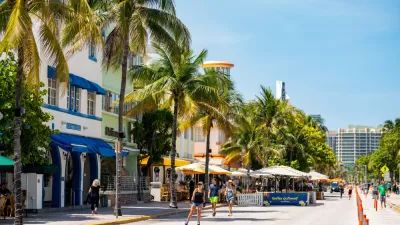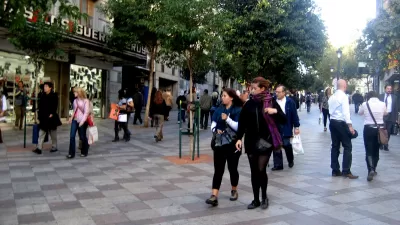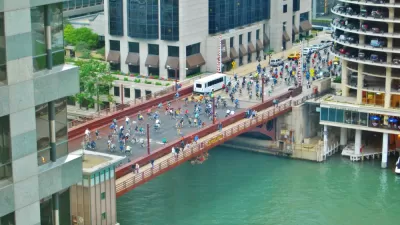"Slow streets" is a popular concept, but residents and community advocates say officials have to do more to make implementation effective and equitable.

With restricted access to most indoor spaces, the humble street got a lot of attention over the last year as cities reallocated right-of-way to pedestrians and public seating. Liz Farmer of the Lincoln Institute of Land Policy writes about Washington, D.C.'s experiment with "slow streets," a program which included 26 miles of road in the district. "While the concept of slow streets was generally well received," Farmer says, "its implementation in Washington and other cities was sometimes rocky—and sparked much-needed discussions about equity, access, and planning."
At a public hearing, residents expressed support for the concept, but disappointment at the execution. "Concerns included a lack of connectivity—among the slow streets themselves and between the streets and other destinations—as well as logistical aspects like traffic enforcement and signage." Residents also expressed concern that communities of color are being left out of the programs, partly due to local mistrust of programs seen as harbingers of displacement.
"The lessons surfacing in DC, which cover issues ranging from transportation inequities to signage logistics, could also be valuable to other cities that are initiating or expanding slow streets projects this year, from Nashville, Tennessee, to Omaha, Nebraska." One important lesson, according to Jessie Grogan, associate director of Reduced Poverty and Spatial Inequality at the Lincoln Institute, "is that cities need to be more intentional about the purpose of the streets in the first place—then design accordingly. 'If you want to get people from point A to B without getting in cars, then how do you do that safely for people walking or biking?'"
FULL STORY: Lessons from Washington, DC's Experiment with Slow Streets

Alabama: Trump Terminates Settlements for Black Communities Harmed By Raw Sewage
Trump deemed the landmark civil rights agreement “illegal DEI and environmental justice policy.”

Planetizen Federal Action Tracker
A weekly monitor of how Trump’s orders and actions are impacting planners and planning in America.

Why Should We Subsidize Public Transportation?
Many public transit agencies face financial stress due to rising costs, declining fare revenue, and declining subsidies. Transit advocates must provide a strong business case for increasing public transit funding.

Phoenix Announces Opening Date for Light Rail Extension
The South Central extension will connect South Phoenix to downtown and other major hubs starting on June 7.

How Housing as a Financial Product Harms Communities
Institutional buyers who treat housing as an investment product become disconnected from the impacts of higher rents, displacement, and housing instability.

Blinded by the Light: When Brighter Headlights Decrease Safety
Bright LED headlights can create glare and reduce visibility for other drivers and pedestrians.
Urban Design for Planners 1: Software Tools
This six-course series explores essential urban design concepts using open source software and equips planners with the tools they need to participate fully in the urban design process.
Planning for Universal Design
Learn the tools for implementing Universal Design in planning regulations.
Caltrans
Smith Gee Studio
Institute for Housing and Urban Development Studies (IHS)
City of Grandview
Harvard GSD Executive Education
Toledo-Lucas County Plan Commissions
Salt Lake City
NYU Wagner Graduate School of Public Service





























